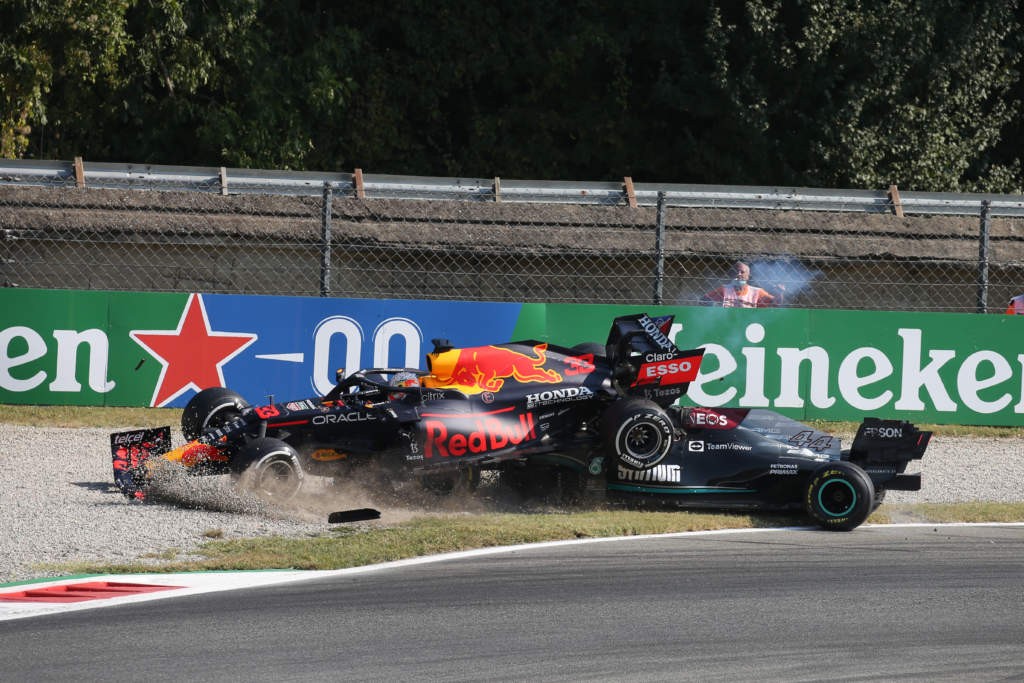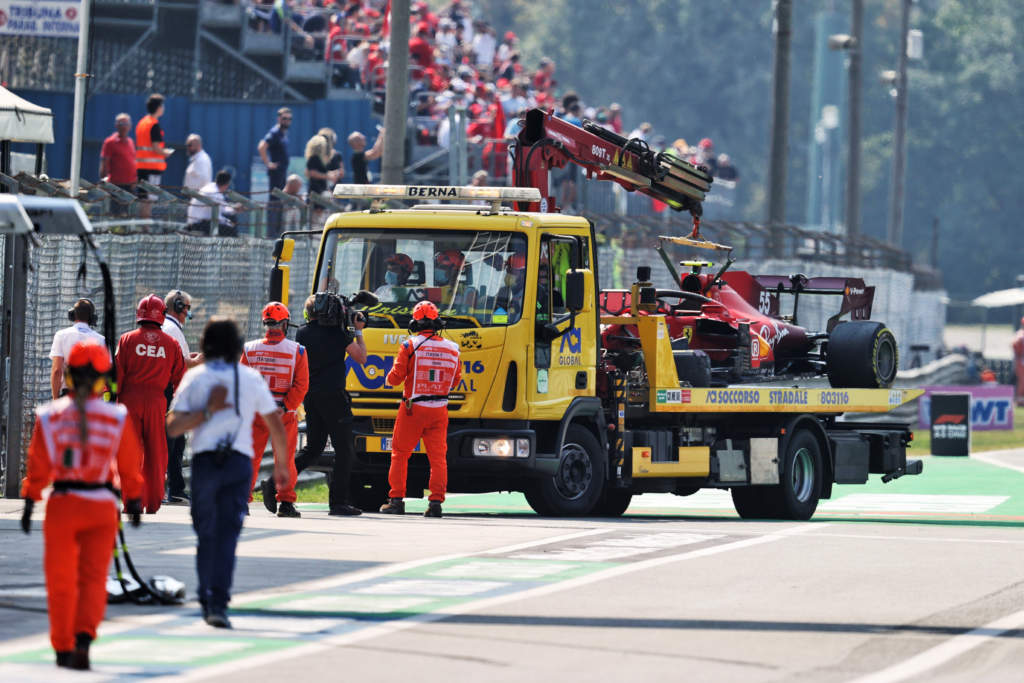Up Next

The FIA safety department will investigate the Lewis Hamilton/Max Verstappen crash from the Italian Grand Prix, even though it happened at low speed, because it is considered an “unusual” accident.
Hamilton said the halo driver protection device saved his life after Verstappen’s Red Bull ended up on top of the Mercedes at the first chicane.
Verstappen hit the inside kerb in the second part of the corner and a wheel bump with Hamilton’s car sent the Red Bull up and into the roll hoop and the halo, striking Hamilton’s helmet with the underside of the right tyre on the way, before coming to rest on the front-left corner.

Both drivers were unharmed in the incident although Hamilton did later complain of a sore neck, and while it was not a spectacular crash like Verstappen’s high-speed one when the two collided at Silverstone it is still set to be reviewed by the governing body.
“Incidents that are different, so it’s not necessarily a high G impact or anything like that, or are unusual, we do look at,” FIA race director and safety delegate Michael Masi explained.
“Our safety department does look at them in detail, investigate and see what we can learn and what we can improve for the future.
“That’s how we have a whole lot of the safety features that we have today, and will continue to evolve into the future.”
A more routine accident, especially a slow-speed one, would not necessarily require an in-depth look but the FIA reviews each accident on its own rather than only automatically checking only high-speed crashes or ones that leave a driver needing medical attention.
Masi said the Hamilton/Verstappen crash, and Carlos Sainz’s impact with the wall at Ascari in FP2, were encouraging signs of the safety features on modern F1 cars.

However, there will likely be lessons from this – most notably the positives of how the halo stood up to another type of impact in the real world but also the shortcomings of the design which still leave the driver’s head exposed.
Hamilton said he was surprised to see the extent of the hit he received on his helmet from Verstappen’s right rear tyre.
Before committing to the halo the FIA also explored a full cockpit wraparound – the Red Bull-designed aeroscreen that is now being used in IndyCar – although that still had an open top.
In the aftermath of Monza, though, the halo device was universally praised.
“You can see Max’s car ride up the Mercedes and without the halo there would’ve been no protection for the weight of that wheel coming down on top of Lewis,” said Red Bull boss Christian Horner.
“The halo has again demonstrated its purpose in Formula 1.”




